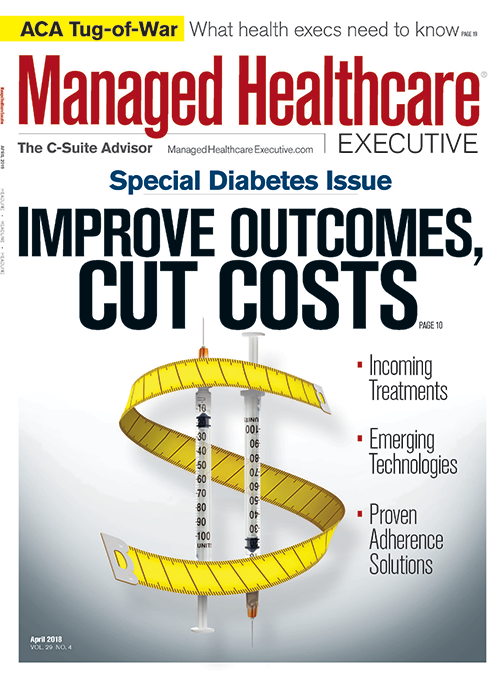Four Ways Health Execs Can Engage Providers
While it is difficult work, provider engagement is attainable. Here are some strategies that health systems can use to successfully engage their physicians.

Provider engagement is fundamental for the success of a health system. Engagement involves a strategy that leads to a stable relationship between physicians and health systems.
There must be a top-down commitment to engagement. Leadership must establish the culture and create an action plan that results in engagement. Providers must adapt to new concepts, including value-based care models, and be meaningfully included in the process, beginning with discussions and through to implementation.
“An organization can benefit from a plan to engage its physicians proactively,” says Clint MacKinney, MD, MS, associate clinical professor at the University of Iowa College of Public Health. “Physicians will determine the success.”
In the physician-patient relationship, engagement provides an opportunity to implement clinically appropriate and efficient processes to improve care.
“We want to be engaged,” says Ralph J. Nobo Jr, MD, a Physicians Foundation board member. “It’s very frustrating when we can’t be fully engaged.”
While MacKinney acknowledges that while it is difficult work, provider engagement is attainable. Here are some strategies that health systems can use to successfully engage their physicians.
1. Communication and collaboration
When physicians are engaged, they understand how best to take care of their patients, Nobo says. In turn, patients are more likely to follow their care instructions.
“If patients feel their doctor is engaged in their care, they’re more willing to participate in that care,” he says. “I strongly believe that when patients feel their physician is engaged, they know their doctor is trying to help them.”
Traditionally, primary care physicians may only know what’s happening with their patients during an appointment, says Robin Tam, senior vice president of strategy & business development for ConcertoHealth, a medical group that partners with health plan networks to improve outcomes. Outside of the face-to-face interaction, physicians have little way of knowing the medical status of their patients.
ConcertoHealth attempts to bridge that disconnect by providing services through its health plan partnerships to keep physicians apprised of any developments regarding their patients in the such areas as admission and discharge activities, medications, and gaps in care.
Related article: Provider Engagement in the New Digital Era
Physicians are delivered insights about their patients they might not otherwise know. “This is the most successful way to engage the physician,” Tam stresses.
Using its strategies of engagement, ConcertoHealth managed to reduce hospital readmission rates by 50% in its Washington market and by 16% in its Michigan market from 2016 to 2018. In addition, hospital admits per thousand were reduced by 16% in Michigan between 2017 and 2018 and emergency department visits per thousand were reduced by 17% in Michigan between 2016 and 2018.
Physicians will engage, Tam believes, if they see a commitment to helping them care for their patients.
“By offering physicians support in the time when the patient is not directly clinically engaged with them, the interaction will become more effective,” she stresses. “Patients will adhere to their treatment plans over time and get the care they need. This makes life easier for the physician.”
2. Lessening burdens and obstacles
Nonmedical responsibilities have always been a part of a physician practice. But outside mandates-from government, hospitals, health systems, and payers and other forces completely out of their control-add to the burden of physicians.
For Nobo, it’s not convincing physicians of the importance of engagement-they already know the importance. It’s convincing outside influencers about the importance. Physicians are supposed to be the leaders in choosing the care model for their patients. Sometimes, though, physicians feel those decisions are taken out of their hands by outside forces, even if they believe it’s not in the best interest of the patient, Nobo says.
“At that point, physicians become disengaged,” he points out.
To have proper physician engagement, it’s important to have the proper dialogue with outside influencers, including hospitals, health systems and payers.
“It is not up to us; it is up to hospitals and third-party payers to allow us to be engaged,” Nobo stresses. “I should be able to speak freely, and I should be able to dictate what is the best course for the patient.”
As for their practices, a health system can provide care management services that benefit physicians and their patients by tending to some of the nonmedical needs such as making sure patients can afford their medications or can get a ride to their appointments.
“This is not a good use of a physician or nurse time but a care management program can take care of these responsibilities,” says John W. Malone, principal of Lumina Health Partners, a Chicago-based healthcare consulting firm.
In the area of technology, providing the proper electronic tools that give physicians accurate, real-time, meaningful information on their patient population will make their jobs easier.
The goal, according to Nobo, should be to allow physicians to do what they do best: care for their patients.
“Removing unnecessary burdens will increase engagement and productivity,” he maintains. “Most importantly, it will improve patient care.”
3. A system-physician partnership
While physicians are on the front lines of care, it is senior leadership that must establish the culture of engagement. MacKinney describes this as a CEO’s most important job.
“Engagement impacts every part of an organization, including finances,” he says. “It’s a responsibility that can’t be advocated down the line. CEOs need to be hands-on.”
At the same time, while health systems have the money to invest in infrastructures to create accountable care organizations (ACOs) and clinically integrated networks, nothing moves forward without physician participation, says William K. Faber, MD, MHCM, managing principal of Lumina Health Partners. Physicians have to participate from the beginning in any model that improves engagement. Without it, the chance of success is low.
Long-standing tensions between physicians and employer-health systems must give way to partnerships where responsibility and financial success are shared.
“No transformation effort goes forward without physicians being engaged,” Faber says. “There has to be an alignment between the incentives for physicians and incentives for the organization.”
4. Succeeding in a value-based environment
Physician engagement takes on added significance as healthcare continues to transition to value-based reimbursement models. Although many physicians continue to resist the transition, change is coming, Faber insists.
“There aren’t many places in the U.S. where it’s just fee-for-service,” he maintains. “The landscape continues to change.”
Faber says health systems should develop strategies to convince their physicians that it’s in their best interest to embrace value-based reimbursement. It’s an easy picture to paint, he points out. Often, his discussions with health system leadership focus on situations where patients leave one medical group for another that has embraced the value model of care.
Related article: Five ways to increase physician engagement
“All of sudden, the waiting room starts to clear out,” Faber stresses. “They feel it in their pocketbooks. The public is demanding value; the status quo will not serve healthcare organizations. Value is how we’re getting paid.”
As the industry moves away from the fee-for-service payment model, it is physicians who will achieve the quality and efficiency metrics that fulfill the promise of value-based reimbursement.
“Physicians have always been important to the success of a hospital or health system,” MacKinney says. “But they will be even more important as we move toward value-based care processes and value-based payments. That’s why engagement is important.”
Ken Krizner is a freelance writer based in Cleveland, Ohio.

Doing More and Saving More with Primary in Home Care
September 1st 2021In this week’s episode of Tuning In to the C-Suite podcast, MHE Associate Editor Briana Contreras interviewed VillageMD’s Senior Medical Director of Village Medical at Home, Dr. Tom Cornwell. Dr. Cornwell discussed the main benefits of primary care at home, which includes the benefit of cost savings for patients, maintaining control of hospital readmissions and others. Dr. Cornwell also noted what has changed in the industry of at-home care and if there has been interest from payers like insurance companies and medicare in the service.
Listen
This week on Tuning Into The C-Suite Briana Contreras spoke with Dr. Scott Hayworth, president and CEO of New York-based CareMount Medical. In this interview, the two discussed the importance of patients staying in contact with their doctors for the sake of reducing public health risks and to discuss ongoing care options with them.
Listen